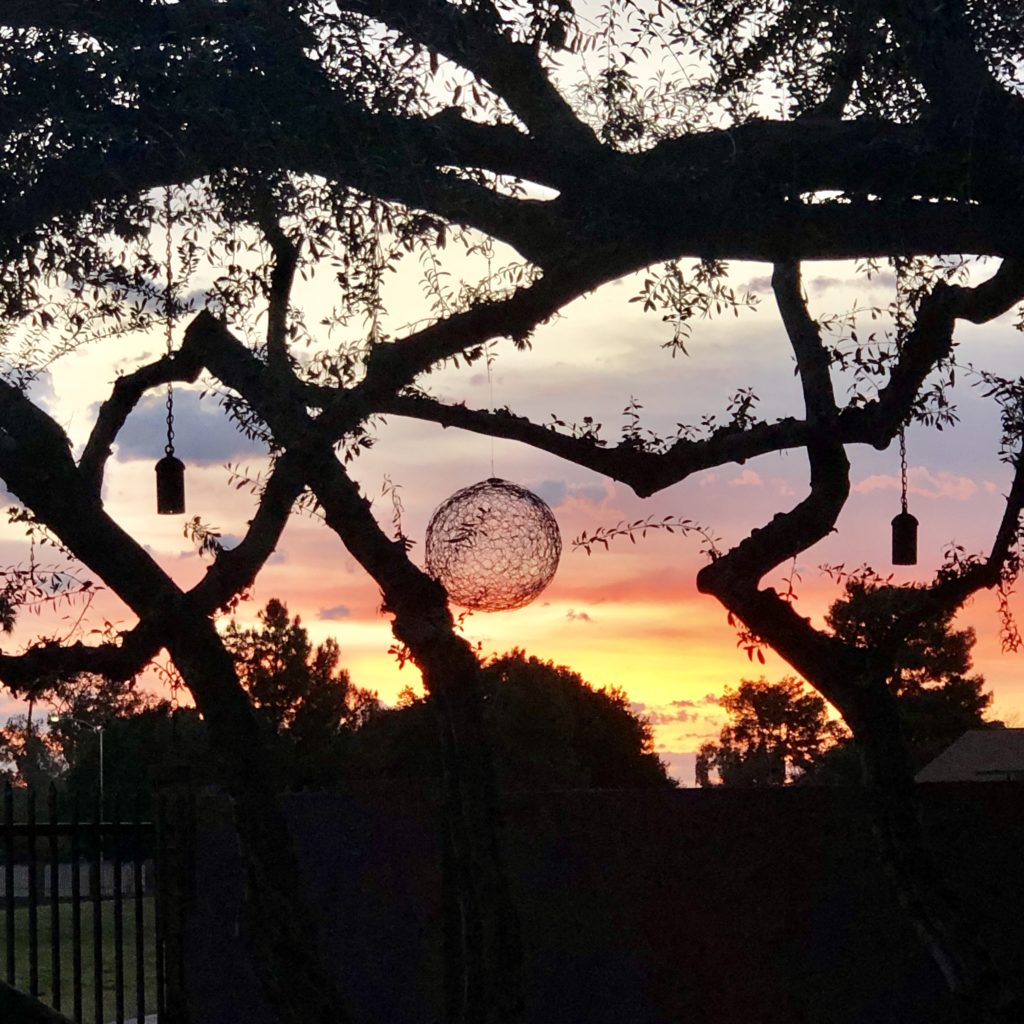
I go out early in my garden and wander through slowly, looking closely at the blooms and the leaves of the plants and trees. I like to watch the light breaking on the horizon. Some days I find things. It might be a tiny feather, a broken bird egg, or a dragonfly that will hover no more. I pick them up, and over time, create my cabinet of curiosities. I like this chance to look more closely at my garden residents.
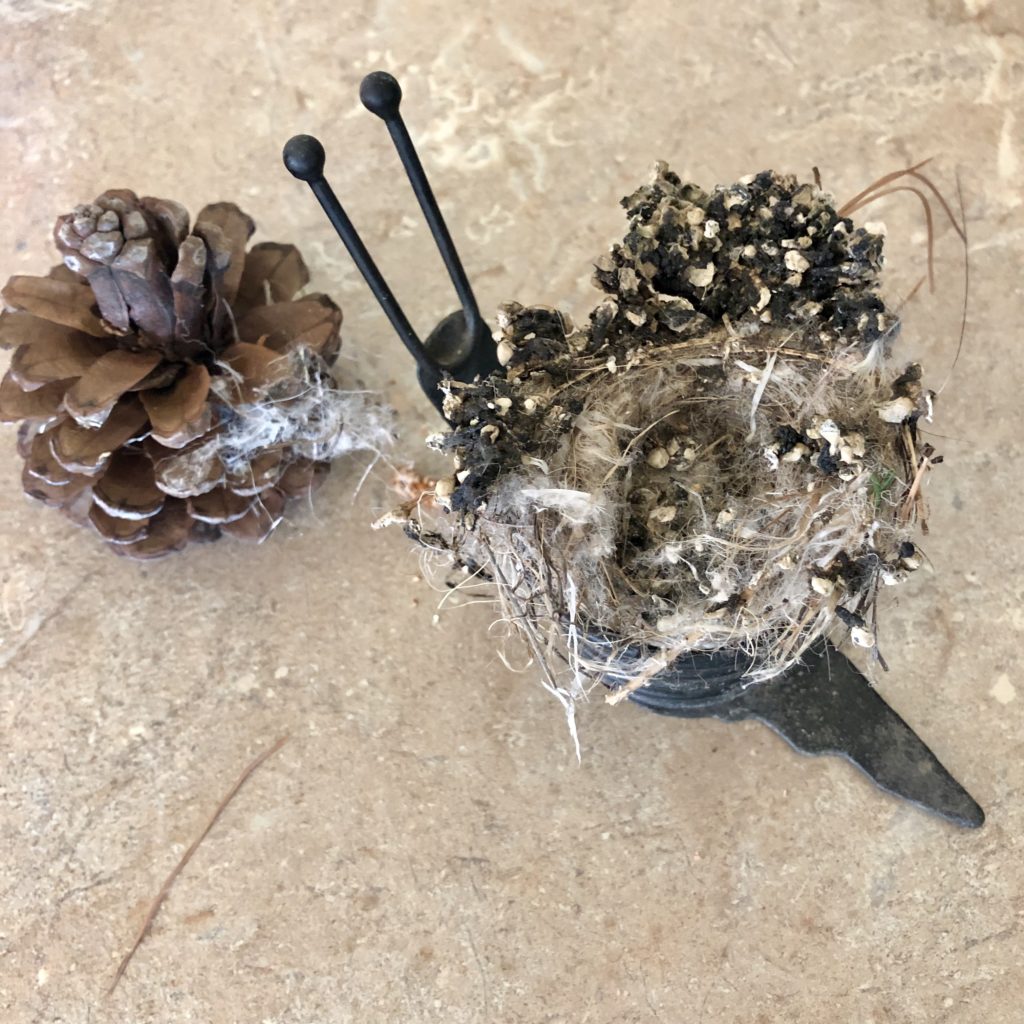
A hummingbird nest made w/ spider web, bits o’ grass, a few pine needles, & surrounded w/ the waste of the growing babies, is a rare find.

One constant this year is a forest of Mexican Fan Palm starts, sending up a ribbed shoot of green. I’ve pulled out 100’s this year, a different kind of weeding. If I don’t pull them out, I’ll be surrounded by palm trees in just a few months.
 I have two geckos, found at different times, lifeless and dry in the bottom of a flowerpot. The skin shell so thin and transparent. I love these little creatures that are all about my garden darting in and out of cover.
I have two geckos, found at different times, lifeless and dry in the bottom of a flowerpot. The skin shell so thin and transparent. I love these little creatures that are all about my garden darting in and out of cover.
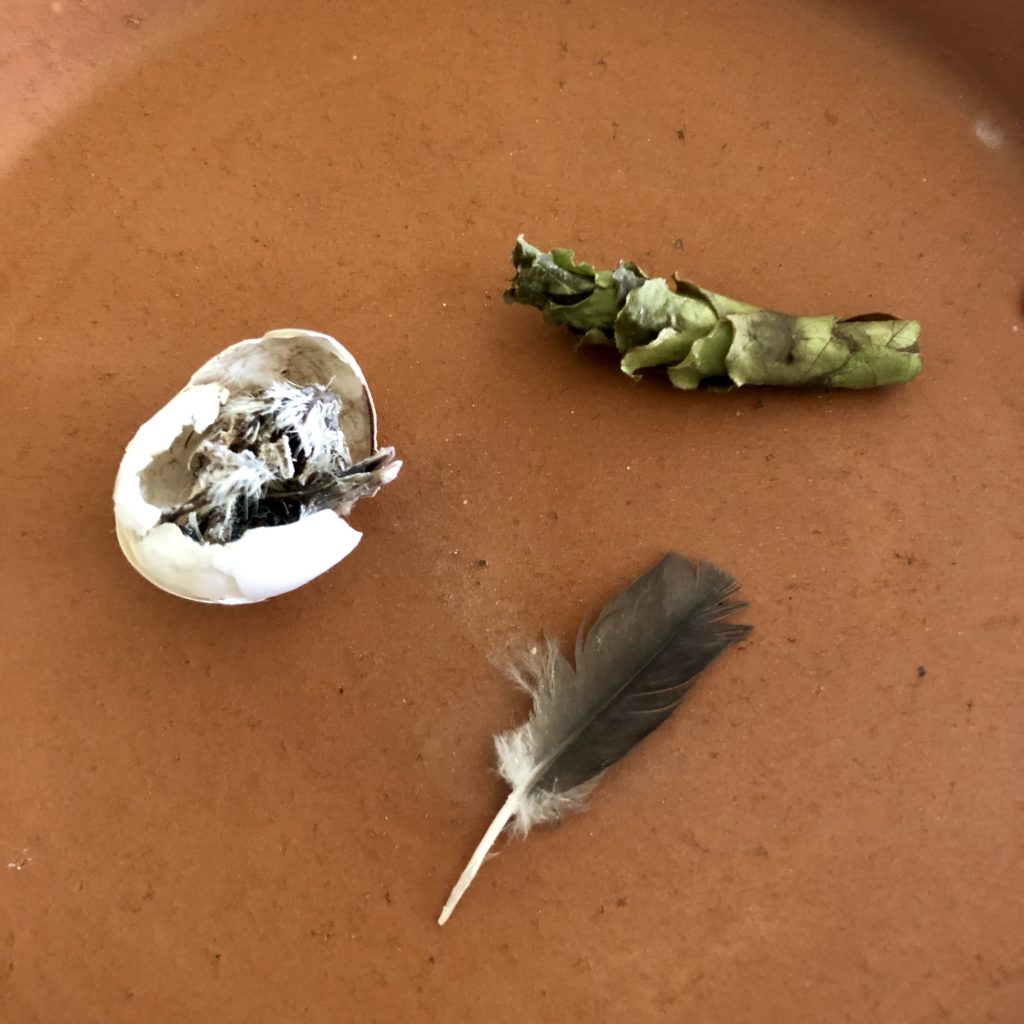 I have a broken bird egg with the baby dried and still curved inside. There are rounds of leaves tucked into tight places that sometimes fall. I think these are made by a type of wasp.
I have a broken bird egg with the baby dried and still curved inside. There are rounds of leaves tucked into tight places that sometimes fall. I think these are made by a type of wasp.
 Early morning, right after the lawn sprinklers shut off I noticed a sparkling blue jewel in the grass and this is what I found, a dragonfly no longer flying.
Early morning, right after the lawn sprinklers shut off I noticed a sparkling blue jewel in the grass and this is what I found, a dragonfly no longer flying.
 I returned from traveling to discover this single perfect mud pot attached to a hunk of quartz I have sitting on my pot shelf — only one, and so delicate. The maker is a mystery to me, but I venture a guess it would be a wasp. Where early potters inspired by this work?
I returned from traveling to discover this single perfect mud pot attached to a hunk of quartz I have sitting on my pot shelf — only one, and so delicate. The maker is a mystery to me, but I venture a guess it would be a wasp. Where early potters inspired by this work?
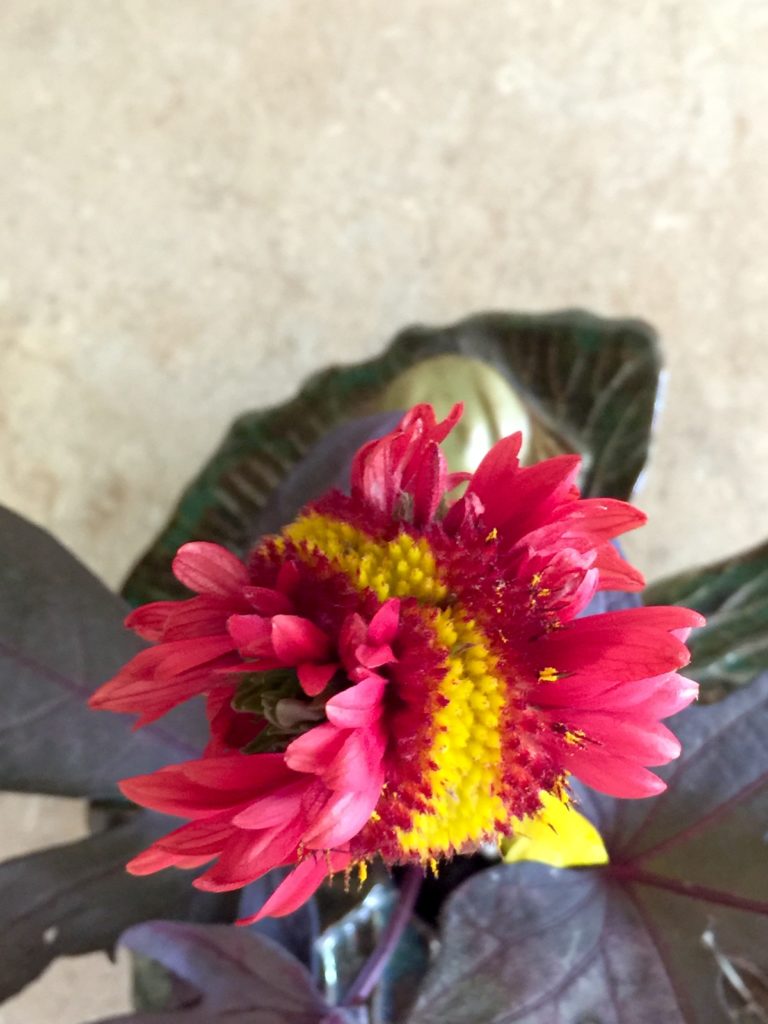 I had a red Gerbera Daisy grow in a very odd way. Rather than a round daisy shape, it grew like a lollipop rounding over both sides. Jackie Carrol, who writes about environmental problems for Gardening Know How, explains this is a condition called Fasciation.
I had a red Gerbera Daisy grow in a very odd way. Rather than a round daisy shape, it grew like a lollipop rounding over both sides. Jackie Carrol, who writes about environmental problems for Gardening Know How, explains this is a condition called Fasciation.
“Fasciation literally means banded or bundled. Scientists aren’t sure what causes the deformity, but they believe it is probably caused by a hormonal imbalance. This imbalance may be the result of a random mutation, or it can be caused by insects, diseases, or physical injury to the plant.”
 I’m always sad when I find a dead bird. Just sad, perhaps this lesser gold finch hit my window? Did it eat something deadly? Was it in a fight with another bird and suffered defeat? I’ll never know.
I’m always sad when I find a dead bird. Just sad, perhaps this lesser gold finch hit my window? Did it eat something deadly? Was it in a fight with another bird and suffered defeat? I’ll never know.
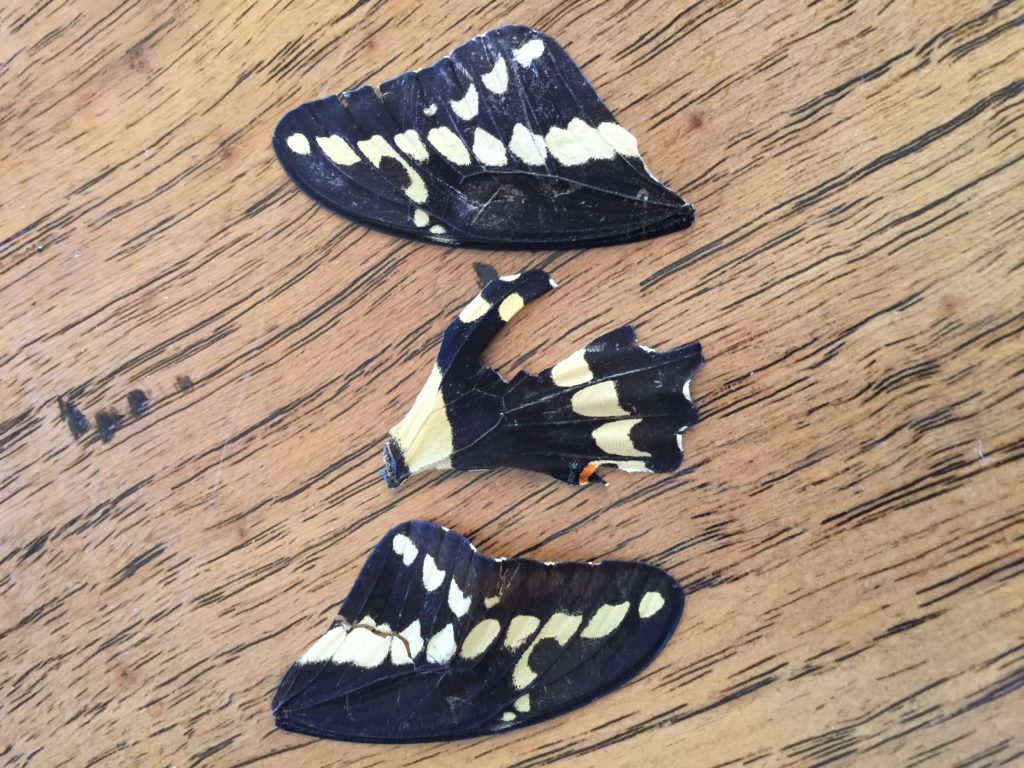 How does a butterfly get broken? Would it be a bird? Perhaps a cat?
How does a butterfly get broken? Would it be a bird? Perhaps a cat?
When I visited the Garden Museum in London, England, I learned about John Tradescant who was not only a gardener but is credited with founding Britain’s first museum. He assembled a collection of things, “To be ‘curious’ was a compliment in Elizabethan/Jacobean times and both Tradescants, father and son became famous for gardening, design, travel and their collection of curiosities.” (Garden Museum)
John the younger was a famous plant hunter so naturally, he found many unique and exciting things to add his collection. The collection known as “The Ark” were items representing nature, art, religion, and elements of the life of all (known) nations on earth. Some of these collected items are on display at the Garden Museum.
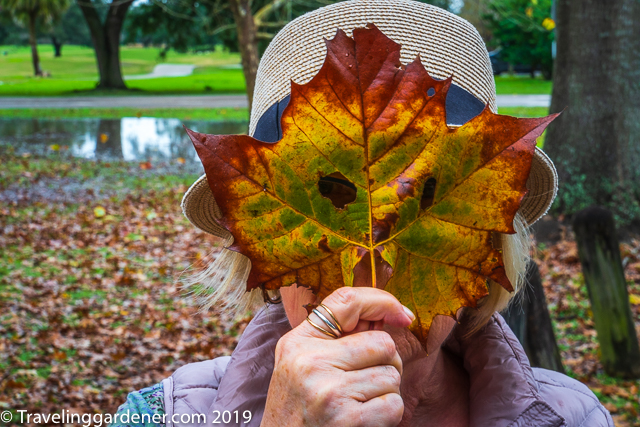 I am curious, and nature fills me with wonder. I’m going to keep looking and collecting to see what I can find.
I am curious, and nature fills me with wonder. I’m going to keep looking and collecting to see what I can find.
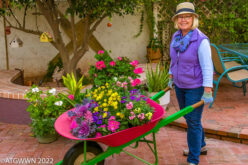
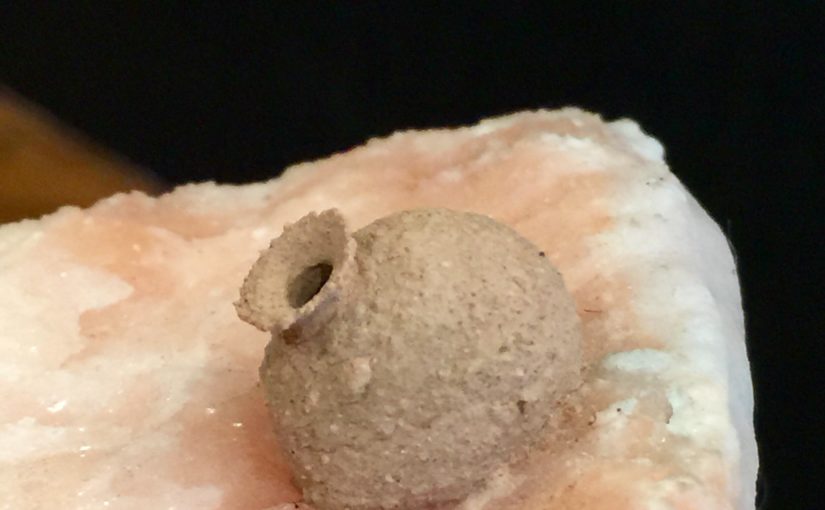
Enjoyed your collection such an interesting idea of small things that give us pause to wonder. I have seen a few of the items in my yard and garden.
Thank You for sharing and opening our eyes to the wonder of nature. I love being with my little grand children to see through their eyes the wonder of the world in small ways. A stroll in the park, a beautiful flower ….
My sister has been sharing some of your emails with me. Your trip to France brought back fun memories of our trip.